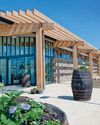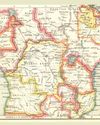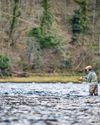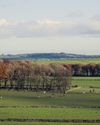The Nestos Delta in Greece harbours the last true wild European population of common pheasant, the black-necked. A project has been launched to save them

In the north-east of mainland Greece, on the border I between the provinces of Macedonia and Thrace, the River Nestos flows out into the Thracian Gulf opposite the island of Thasos. It has wound down from the high (just short of 2,000 metres) ridge of the Rhodope Mountains that separate Greece from Bulgaria, through foothills and across farmland, to its wet, wooded delta. This small cross-section of habitats harbours an unusually rich mix of galliformes – birds of the pheasant family. Seven or maybe eight species can be found here, including capercaillie and hazel grouse – both at the southern limit of their range – chukar and rock partridge.
The World Pheasant Association (WPA) has just launched a conservation project in the Nestos Delta, in partnership with the Hunting Federation of Macedonia and Thrace (KOMATH) and the Game and Wildlife Conservation Trust (GWCT). The project agreement was signed in Thessaloniki last December; its aim is to conserve a perilously small population of the black-necked pheasant (Phasianus colchicus colchicus), a sub-species of the common pheasant. With other much more unusual species in the area, why focus on the common pheasant?
The black-necked are common pheasants of the type that shows no white neck ring. The common pheasant is found from the far east of China all across Asia to the Caucasus and the Black Sea in the west, with variations in plumage from one area to another across this vast range. Ring-necked are typical in the east; the black-necked occurs in the western part of the range, in Azerbaijan, Armenia and Georgia. Jean Delacour, in his classic work The Pheasants of the World, recognised 31 subspecies of our familiar game pheasant.
This story is from the {{IssueName}} edition of {{MagazineName}}.
Start your 7-day Magzter GOLD free trial to access thousands of curated premium stories, and 9,000+ magazines and newspapers.
Already a subscriber ? Sign In
This story is from the {{IssueName}} edition of {{MagazineName}}.
Start your 7-day Magzter GOLD free trial to access thousands of curated premium stories, and 9,000+ magazines and newspapers.
Already a subscriber? Sign In

Rory Stewart - The former Cabinet minister and hit podcast host talks to Alec Marsh about the parlous state of British politics, land management and his deep love of the countryside
The gently spoken 51-year-old former Conservative Cabinet minister is a countryman at heart. That's clear: he even changes into a tweed waistcoat for the interview, which takes place at his London home and begins with a question about his precise career status. Having resigned from the Commons and the Conservative Party in 2019, the former diplomat and soldier has reinvented himself, first with an unconventional but promising run as an independent for the London mayoralty (abandoned because of COVID19 in 2020) and then as a media figure, co-hosting one of the country's most popular podcasts, The Rest Is Politics, alongside Alastair Campbell, the former Labour spin doctor.

Fodder
Local fare with the feel-good factor.

Celebrating the game changers
Once served only in the traditional manner, the fruits of our forays now find their way into all manner of diverse and delicious dishes, say Neil and Serena Cross

The first civil engineer
John Smeaton left an indelible mark on the field of engineering and, three centuries after his birth, his legacy remains as strong as ever

School spirits
From grey ladies and ghostly gardeners to more malign entities, public schools are a rich repository of unnatural phenomena

'A long way from Piccadilly or Pall Mall'
Marking 150 years since the birth of Sir Winston Churchill, Dr Conor Farrington explores this eminent statesman’s often-overlooked 1907 tour of British East Africa: a journey rich with enchanting natural beauty and sporting adventure

Top of the pups
Canines in all their guises were celebrated at The Field Top Dog Awards lunch at Defender Burghley Horse Trials whether eager on the peg, patient at home or perpetually making mischief

Angling for success
It’s never too early to shape up for next season’s salmon and trout, and these top fishing schools are here to help

Talking scents
The canine nose is an astonishingly complex piece of biotechnology that man has harnessed for sustenance and sport for thousands of years

Wall-to-wall excitement
Criss-crossed by formidable drystone walls, the High Peak Harriers’ scenic country provides a day out with an exhilarating difference